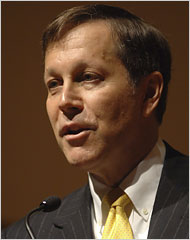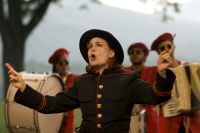 • In case you missed my previous posting on the subject, the Hudson Valley Shakespeare Festival‘s production of Shakespeare’s Twelfth Night will be telecast on WNET this Thursday at nine p.m. It will be preceded by Shakespeare on the Hudson, a backstage documentary on the making of Twelfth Night, which airs at eight.
• In case you missed my previous posting on the subject, the Hudson Valley Shakespeare Festival‘s production of Shakespeare’s Twelfth Night will be telecast on WNET this Thursday at nine p.m. It will be preceded by Shakespeare on the Hudson, a backstage documentary on the making of Twelfth Night, which airs at eight.
I raved about this production when I reviewed it in The Wall Street Journal earlier this year, and I’m delighted that it’s going to be seen on TV–though grieviously disappointed that it will only be seen in the New York area. My advice to those who live elsewhere: complain to PBS!
For more information, go here.
Both shows will also be telecast by WLIW on September 26 starting at nine p.m.
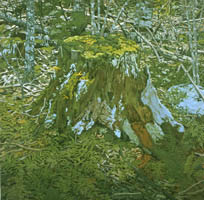 • An exhibition of woodcuts by Neil Welliver, a representational artist who, like Fairfield Porter, was deeply influenced by abstract expressionism, has just opened at the Alexandre Gallery, where it will be on view through September 27. Welliver, who died three years ago, was one of America’s great printmakers, and his woodcuts (one of which I own) were among his very best work.
• An exhibition of woodcuts by Neil Welliver, a representational artist who, like Fairfield Porter, was deeply influenced by abstract expressionism, has just opened at the Alexandre Gallery, where it will be on view through September 27. Welliver, who died three years ago, was one of America’s great printmakers, and his woodcuts (one of which I own) were among his very best work.
For more information about the show, go here. To see a selection of Welliver’s prints, go here.
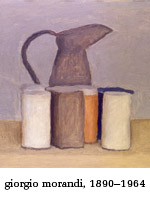 • The Metropolitan Museum’s eagerly awaited Giorgio Morandi retrospective opens tomorrow and will be on view through December 24. I hope I don’t need to tell you how important this show is, but if so, here’s what the Met has to say about it:
• The Metropolitan Museum’s eagerly awaited Giorgio Morandi retrospective opens tomorrow and will be on view through December 24. I hope I don’t need to tell you how important this show is, but if so, here’s what the Met has to say about it:
This is a comprehensive survey–the first in this country–of the career of Giorgio Morandi, one of the greatest 20th-century masters of still-life and landscape painting in the tradition of Chardin and Cézanne. The exhibition presents approximately 110 paintings, watercolors, drawings, and etchings from his early “metaphysical” works to his late evanescent still lifes, culled mainly from Italian collections, including those formed with Morandi’s help by his friends and by renowned scholars of his art.
For more information, go here.
In addition to the Met’s exhibition, two New York galleries are putting on Morandi shows of their own. Lucas Schoormans Gallery, to whose 2004 Morandi exhibition I gave an ecstatic review in the Washington Post, is putting on a new show of paintings and works on paper that opened last week. And Pace Master Prints’ “The Etchings of Giorgio Morandi,” which consists of twenty-five works, opens on Thursday.
For more information, go here and here. Both shows are up through October 18.

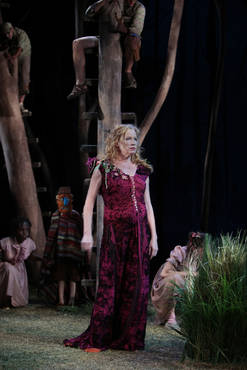 If it’s summer, somebody’s doing “A Midsummer Night’s Dream.” I’ve seen two very different productions in the past two weeks, and I’d hate to have to choose between them. Fortunately, art isn’t sports, so I’m not required to pick a winner. Suffice it to say that Connecticut’s Hartford Stage, like Wisconsin’s American Players Theatre before it, has done exceptionally well by Shakespeare’s best-loved comedy.
If it’s summer, somebody’s doing “A Midsummer Night’s Dream.” I’ve seen two very different productions in the past two weeks, and I’d hate to have to choose between them. Fortunately, art isn’t sports, so I’m not required to pick a winner. Suffice it to say that Connecticut’s Hartford Stage, like Wisconsin’s American Players Theatre before it, has done exceptionally well by Shakespeare’s best-loved comedy. The most important American art exhibition of the 2008-09 season,
The most important American art exhibition of the 2008-09 season, 